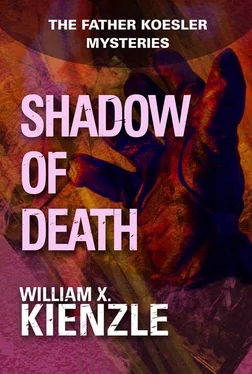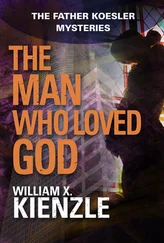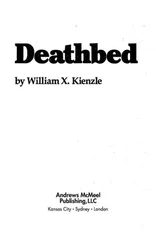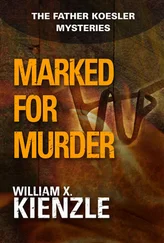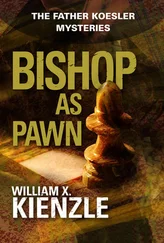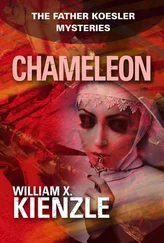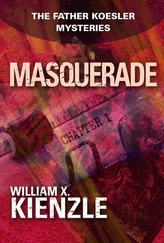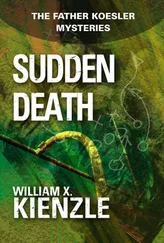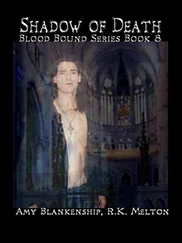“Oh, yes, absolutely,” Irene Casey replied. “He definitely is a man for a couple of seasons.”
“Personally,” said Joan, as the guide’s rote recitation ran on, “I prefer St. Paul’s; it is so much brighter and festive—”
“And bigger,” Irene added.
“And bigger,” Joan agreed. “But one cannot overlook the fact that the abbey is used for coronations. I suppose that’s a factor in evaluating the two churches. One mustn’t sneeze at a coronation.”
“Speaking of coronations,” said Irene, “I meant to tell you what happened at lunch. Four of us were seated at a table set for five. When the waitress came to our table, it was ever so obvious that she had just come over from Ireland; you could cut her brogue with a knife.”
“We must’ve had the same waitress. Didn’t she have a beautiful complexion? And those rosy cheeks!”
“Yes, gorgeous. Well, anyway, when she noticed the extra plate, she said, ‘There’ll be just the four of you, then? I’ll just clean away this extra serving.’ And one of the other diners remarked, ‘Yes, we invited the Queen, but she couldn’t make it.’ And the waitress retorted. ‘Well then, and aren’t you the lucky ones!’”
The two women laughed.
“Now this, ladies and gents, is one of the two shrines within this magnificent church. Here, at the very heart of Westminster Abbey is a shrine that contains the body of its founder, Edward the Confessor. Henry III in his spankin’ new abbey provided for Edward a much more gigantic and bejeweled tomb than the one you see before you. That tomb became a place of pilgrimage. The sick were often left at the tomb during the night hours, with all prayin’ for a miracle. This shrine was despoiled at the time of the Reformation, as were so many other priceless treasures. So that which you now see is but a shadow of its former grandeur. But it does hold the remains of the saintly and revered King Edward the Confessor.
“Now, ladies and gents, if you’ll follow me to the west of this shrine, we’ll come to the next point of interest.”
“Have you seen anything out of the ordinary or suspicious?” Father Koesler, unofficially commissioned to reconnoiter Westminster Abbey, and not at all sure what he should be looking for, was sticking close to the Reverend Toussaint. When Toussaint’s attention was drawn to something in the abbey, so was Koesler’s. What Toussaint overlooked, so did Koesler. As far as the priest was concerned, it was a foolproof little system.
“No, not really,” Toussaint responded. “Just that the abbey is very beautiful and very rich in tradition. Even more so than I had expected.”
“Well, let me ask you this,” Koesler persisted, “do you have any idea what we’re looking for?”
“I think we are looking for nothing in particular, nor do I anticipate that we will find anything untoward. As I see it, the Inspector wants us to familiarize ourselves with the abbey so that we might be alert to anything out of the ordinary tonight.”
That sounded straightforward enough.
Koesler looked about as they moved to the west side of the shrine. “Everything seems so tranquil, so settled, so lost in history, that it’s hard to think there could be violence here.”
“But,” said Toussaint, “even as we talk, I am certain there are at least a couple of men who are preparing themselves to commit murder.”
A tremor ran through Koesler.
Toussaint glanced about several times. “Bob, do you have the feeling we are being followed? That someone is watching us?”
Koesler reflected. “No, I don’t. But that may be because, to my knowledge, I’ve never been followed. I don’t think anyone ever thought I was worth following. I’m not sure I’d recognize the feeling if I were.”
“Do not be concerned, Bob. I may very well be mistaken.”
The guide cleared his throat, preliminary to continuing his spiel.
“Now this, ladies and gents, very ornate and obviously ancient wooden chair is the very throne used for the coronation of King Edward the First. And it has been used in the coronation of all subsequent English monarchs with the two exceptions of Edward V and Edward VIII. The coronation ritual has developed and changed over the centuries. But the coronation chair has remained the same over all.
“Now, you’ll note the obvious presence of a large gray rock set right within the confines of the chair. That, ladies and gents, is the famed Stone of Scone. In 1296, Edward ‘malleus Scotorum’ captured the stone from the Scots, who had crowned most of their kings on their ‘stone of destiny,’ brought it to London and, at a cost of one hundred shillings, had this special oak chair made to contain it. Both the chair and the stone have been used at English coronations ever since.
“And now, ladies and gents, we’ll just be movin’ along.” He checked his watch. “Time’s gettin’ short and we don’t want you to miss Madame Tussaud’s.”
“What’s this ceremony tonight supposed to be, anyway, another Mass?” Joe Cox asked.
“Not hardly,” Pat Lennon replied. “It’s some sort of ecumenical or intersectarian service. They can’t hold a Mass. The Catholics and Anglicans don’t agree with each other enough to hold a Mass. And the ceremony is going to have a couple of Catholic Cardinals along with the Anglican Archbishop of Canterbury.”
“Well, don’t the Anglicans hold Masses in here?” Cox persisted.
“They call them something like communion services.”
“Don’t the Catholics have communion services?”
“Well, yes; but they’re not the same.”
“What’s the difference?”
Lennon sighed. It was all so complicated. And, in the final analysis, she wasn’t all that interested in all this ecclesiastical red tape.
“Maybe it would help, Joe, if you thought of it in terms of an Australian tag wrestling match.”
“Now you’re cooking.”
“The way Catholics view their Church is that Jesus Christ established it. He chose the Apostles to, in effect, be the first bishops, and gave the primacy—or ‘the power of the keys’—to Peter. They, in turn, selected others to succeed them; those others selected others, who selected others, and so on. For instance, Peter became the first bishop of Rome. And he was succeeded by Linus, then Cletus, then Clement, and so on, down to the present Pope, Leo XIV.
“But, as far as Catholics are concerned, today’s bishops of Christian sects are real bishops only if they can trace themselves in a direct line from the Apostles.”
“And that means that only Catholic bishops qualify,” Cox supplied.
“Not necessarily. The Orthodox bishops—Greek, Russian, and so forth—are also direct descendants of the Apostles, but they don’t recognize the Pope as the supreme leader of Christianity, so they’re not Catholic. But the Catholics recognize them as real bishops.”
“Then what’s the matter with the Anglicans?”
“In the beginning, nothing. At the time of Henry VIII, all England was Catholic. When Henry decided to do it his way, the bishops were still kosher, to mix a metaphor. But then, somewhere along the line, the Catholics decided that the Anglicans had broken the chain. The rest, as they say, is history.”
“To return to your original metaphor,” Cox was trying to clarify her explanation for his own comprehension, “just as in an Australian tag match, the partner in the ring has to touch his partner on the apron of the ring before the inactive one can take his place . . . so each prospective bishop has to be touched by a valid predecessor in order to be an authentic successor bishop. Right?”
“I think he’s got it . . . by George, he’s got it!”
“I have only one further question: What makes you so smart?”
Читать дальше
